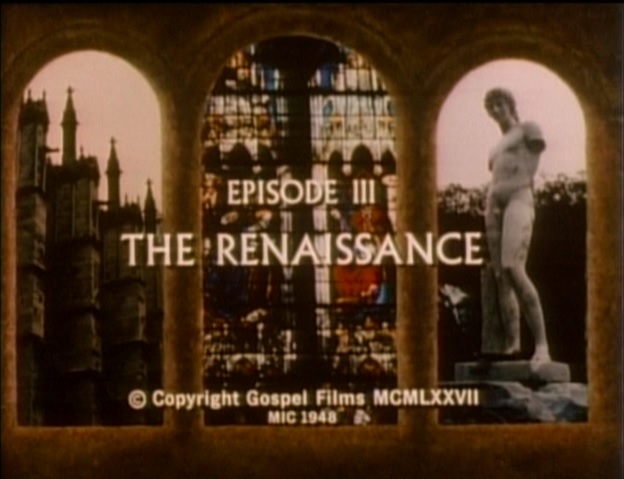This is the sixth regular installment in a series of posts as I rewatch a 1977 documentary film called How Should We Then Live? If you’re reading this series for the first time, it’s best to start with the project introduction. Today’s episode is “The Scientific Age.”
In the later parts of this week’s episode of How Should We Then Live, things start to get a little weird.

Francis Schaeffer’s main tasks in “The Scientific Age” seem straightforward if you’re familiar with the work of other evangelical intellectuals. First, Schaeffer seeks to show that Christianity is fully compatible with modern science. (Indeed, he wants to show that Christianity contributed to it.) But he also wants to show that the uncritical embrace of science and technology can erode fundamental human values.
This is not an unusual pair of claims. Philosophers and historians have advanced these claims, or something close to them, for generations. They’re countering a 19th-century notion, the “Conflict Thesis,” which says there is a fundamental opposition between religious and scientific thinking.
The Conflict Thesis is still widely believed in America today, and it has high-profile proponents among science communicators. But most contemporary historians have little patience for it. The Conflict Thesis requires an ahistorical view of both science and religion. To a historian’s eyes, science and religion are complex human activities unfolding in time like everything else humans do.
So this episode presents a great opportunity for Francis Schaeffer to be basically on the same side as historians in a contentious public debate.
But Schaeffer doesn’t stop there. After addressing Christianity’s role in the Scientific Revolution of the early modern age, he moves ahead to the 1970s and beyond, speculating about the future of human reproduction and other questions of bioethics. That’s where things get weird.
In that later part of this episode, I think, we get another strong taste of the cultural anxieties that brought Francis Schaeffer, our rehabilitated 1950s fundamentalist living in Switzerland, back into American political conservative activism. So later in this post, I’m going to dive back into the political context of Schaeffer’s work on this film in the 1970s.
Specifically, I’m going to talk about the time Francis Schaeffer got a late-night White House tour from Gerald Ford—after which he ended up sitting in the Lincoln Bedroom, telling the president’s son and daughter-in-law his plans for filming How Should We Then Live.
Continue reading “How Should We Then and Now: Ep. 6 (The Scientific Age)”


